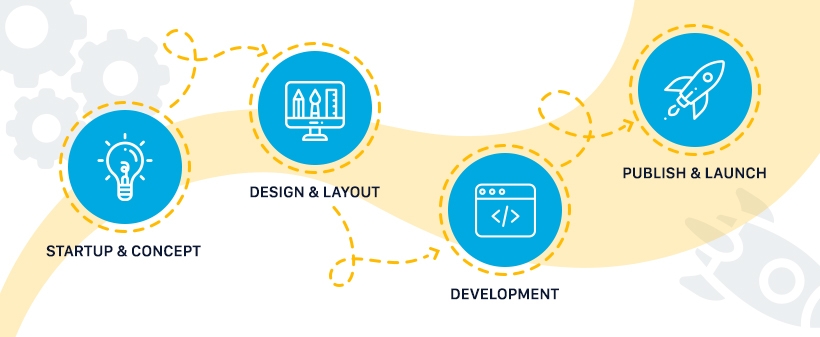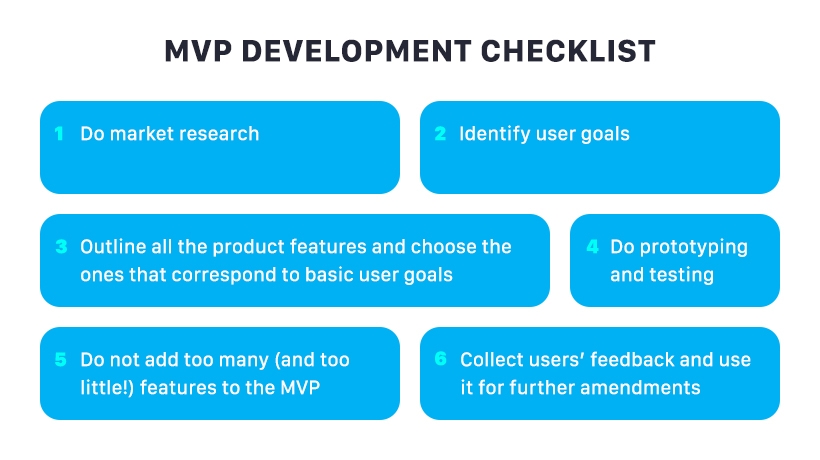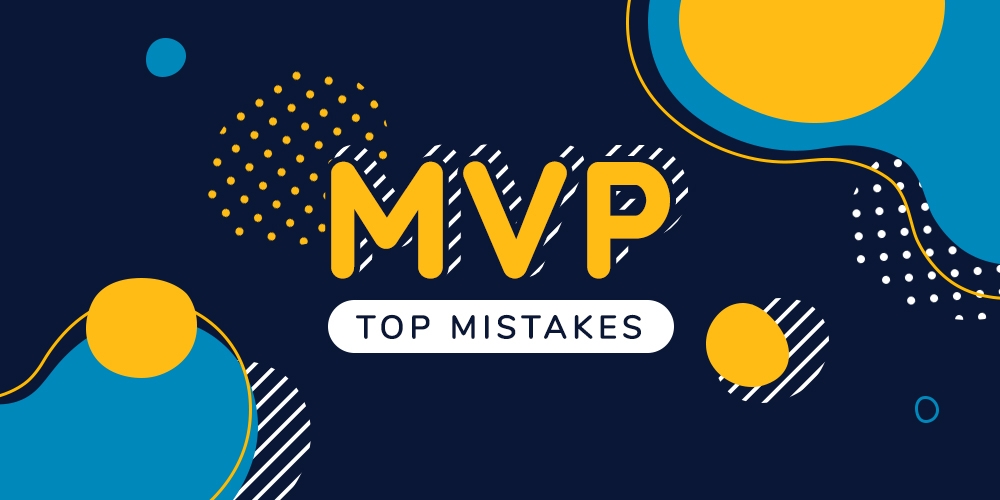A Minimum Viable Product aka the MVP is something that saves product owners lots of time and money.
It is basically a fully functioning product prototype with a set of all critical features. While it may lack in UX or some additional features, MVP helps test the project on the market, collect feedback and immediately apply any changes, if needed.

Many development companies offer MVP development as a service. It normally comes at an affordable price and developers do their best to create not just a prototype but a comprehensive product that can be launched and used.
By now, it sounds quite simple – yet, many companies manage to fail their MVP development.
So what are the top mistakes that companies make and how do you avoid them? Let’s have a look.
Ignoring the market
The concept of MVP is to test the idea with the market. So the biggest mistake that many product owners do is ignore the market research completely and just let it roll.
Lack of research on the users’ preferences and habits may cost you significant financial losses, including the time that was spent on development. So before starting any work on project development, double-check you are acting in accordance with the interests of your potential users.
Putting too much in the MVP
As we said, MVP is supposed to be a prototype. It should contain certain features but it should not have anything extra – otherwise, it will be more costly to apply changes once you test your MVP.
However, some companies mean well so they pack the MVPs with tons of features that are simply not needed at this stage. And when the MVP is launched for testing, it may turn out you need to change almost anything and get rid of all these extra features. Now imagine how much time and effort it will take.
To avoid such situations, make a list of all the features that a product should have and then prioritize them. Judge from the users’ goals and see which features will be needed the most. In this way, you will be able to create a really well-balanced MVP and easily change it in case it is needed.
Missing the prototyping phase
Even the MVP needs prototyping because it’s a functional product, after all. However, companies sometimes manage to get straight to the MVP development, having only a list of required features and a vague idea of how it should look like.
But you will present the MVP to the users and the users will explore your product. So it’s your responsibility to make this product appealing and user-friendly.
Collaborate with the design team and together, create a wireframe of a project. Visualize how the product should look like and outline the possible user journeys. You don’t want to start developing and then change the direction halfway. This is why it’s critical to do prototyping before developing an MVP – it will help you avoid the major headache in the future.
Lacking experience and communication
This point relates to soft skills but is still important, especially for the software development environment.
When a client describes his idea to the development team, it rarely happens in the form of well-structured and definite requirements. Most often it’s just his vision and description of desired functions so it’s up to a Project Manager to interpret these ideas into the requirements for the team.
Here is where poorly organized communication and lack of experience will kill the project. If the team has little experience with the needed tools and technologies, it will inevitably harm the project and will result in its poor quality. And if the team has poorly organized communication processes, that will lead to constant misunderstandings, missed deadlines, and lots of unpleasant arguments.
Before getting down to any development project, be it an MVP or development of a final product, ensure that your company has well-organized internal procedures on communication with the client. And of course, match the existing expertise with the results that you promise to deliver.
Ignoring the feedback
MVP is needed to test the idea and later turn it into a final product. So it’s quite logical that you’d need to collect the feedback from the users and analyze it in order to understand how to improve the product.
Some companies make these two mistakes: they either ignore the feedback completely or get confused between quantitative and qualitative feedback.
The first mistake is quite obvious: if you forget about the feedback and do not collect it, you will never know what’s wrong with your product from the user’s point of view. This leads us to the second mistake: the need in both quantitative and qualitative feedback.
Quantitative feedback comes in the form of definite metrics that answer specific questions: how many bugs occurred while using the product? What was the average use time?
Qualitative feedback is more about the user-friendliness of the product and users’ thoughts about it. For qualitative feedback, developers may ask users to describe what was the best part of the product and why.
It is important to collect both forms of feedback and base your further decisions upon them. In this case, you will be able to timely identify the problem areas and fix them.
A checklist for MVP development
In order to help you remember all the essentials of a successful MVP development, we’ve come up with a small checklist:

Before choosing a development agency to work with, double-check the organization of communication and the correspondence of their portfolio to your desired tech stack. In this way, you will secure yourself and the project against any unpleasant surprises during development.



